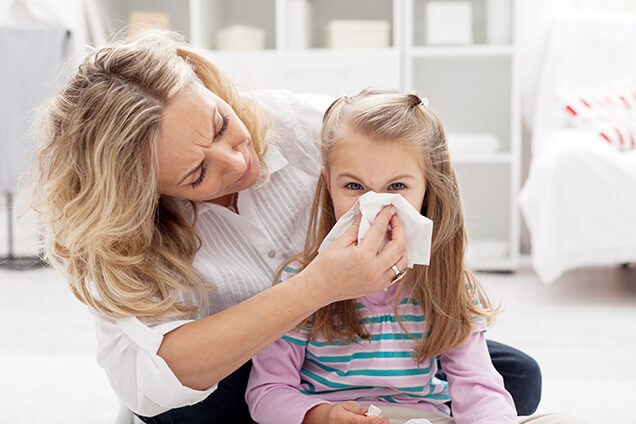Uncovering the 4 Major Threats to Indoor Air Quality

Indoor air pollution is a growing concern as people spend a significant amount of time indoors. Poor indoor air quality can cause health problems such as headaches, allergies, and respiratory issues. Understanding these pollutants and the sources that contribute to their presence can improve indoor air quality. Here are four main causes of indoor air pollution.
1. Asbestos
Asbestos is a major indoor air pollutant and a hazardous material commonly used in construction and insulation until the 1980s.
Asbestos fibers are microscopic and are not visible to the naked eye. The fibers can become airborne and can be inhaled when asbestos-containing materials are disturbed or damaged. Asbestos fibers are not easily cleared from the lungs, and over time, they can cause significant damage to the respiratory system, leading to serious health problems.
Asbestos exposure can lead to the development of lung diseases such as mesothelioma and lung cancer. Asbestos fibers can also cause other health problems, such as asbestosis, a chronic lung condition that causes shortness of breath and coughing.
While the use of asbestos has been heavily regulated since the 1980s, many older buildings may still have asbestos-containing materials in them. If you live in an older home or are concerned about the presence of asbestos, a professional must inspect your home.
Asbestos should only be removed by professionals with the equipment and training to handle the material safely. Do not attempt to remove asbestos yourself as this can be dangerous and can increase the risk of asbestos fibers becoming airborne and contaminating the air.
2. Biological Pollutants
Biological pollutants, also known as bioaerosols, are living organisms that can be found in indoor air and cause various health problems. Some common sources of biological pollutants include mold, bacteria, viruses, and pet dander. These pollutants can be especially problematic for people with allergies, asthma, and other respiratory problems.
Mold is a common biological pollutant that can grow in damp or humid environments, such as basements, bathrooms, and kitchens. Inhaling mold spores can cause respiratory problems, such as coughing, wheezing, and eye, nose, and throat irritation. Long-term mold exposure can also lead to serious health problems like lung infections and other respiratory conditions.
Pet dander, made up of tiny skin particles that animals shed, is another common source of biological pollutants. Pet dander can trigger allergies, asthma, and other respiratory problems, especially for people sensitive to animal allergens.
It is important to reduce their sources to minimize the impact of biological pollutants in indoor air. This can include removing sources of moisture and dampness, keeping indoor spaces clean and dry, and using air filters and air purifiers to remove pollutants from the air.
Be aware of the symptoms of exposure to biological pollutants. These symptoms can include headaches, dizziness, eye, nose, and throat irritation, and respiratory problems. If you experience these symptoms, it is to seek medical attention and take steps to improve indoor air quality.
3. Carbon Monoxide
Carbon monoxide (CO) is a colorless, odorless gas that is a major indoor air pollutant. It is produced when fossil fuels, such as natural gas, propane, oil, and wood are not burned completely. It is impossible to see or smell CO, making it difficult to detect when it is in indoor air. The symptoms of CO poisoning are similar to those of other illnesses, such as headaches, dizziness, and nausea, which can make diagnosing it difficult.
Common sources of CO in indoor air include malfunctioning heating systems, appliances that burn fossil fuels, and outdoor air pollution. Suppose you are concerned about the presence of CO in your home. In that case, a professional must inspect your heating system and appliances to ensure that they are functioning properly and minimize the risk of CO buildup.
Additionally, you’ll want to install a carbon monoxide detector on each floor of your home. A professional from Puyallup Heating & Air Conditioning can provide you with recommendations and help you install them.
4. Emissions From Cookstoves and Heaters
Woodstoves and heaters that use solid fuels, such as wood, coal, and biomass, emit harmful pollutants into the air when burned. These pollutants include fine particulate matter (PM2.5), carbon monoxide, and polycyclic aromatic hydrocarbons (PAHs), all of which can have serious impacts on human health.
PM2.5 is a type of air pollutant that is small enough to penetrate deep into the lungs and enter the bloodstream. It can cause various health problems, including respiratory and cardiovascular diseases. If you burn wood in your home, you’ll want to have your system inspected by a professional each fall to be sure that all connections are well-sealed.
In addition to their heating and air conditioning services, the professionals at Puyallup Heating & Air Conditioning also offer a range of other services to the residents of Puyallup, WA, including indoor air quality solutions and duct cleaning. With indoor air quality being an increasingly important issue for many homeowners, we provide a range of solutions to help improve indoor air quality and reduce the presence of indoor air pollutants. Contact Puyallup Heating & Air Conditioning today for more information.
Tags: Indoor Air Quality


